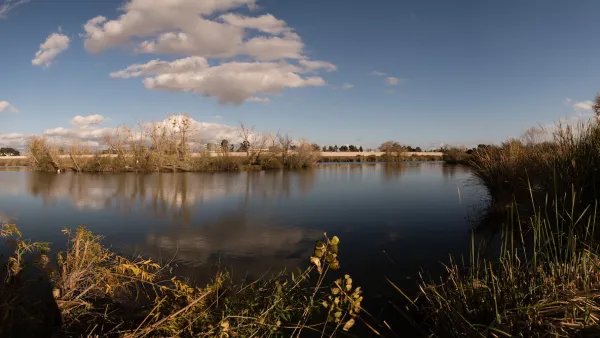In this travelogue, Dwell tours the often-overlooked infrastructure that keeps the metropolis of Los Angeles running.
"Los Angeles is a polarizing city. To some it is a paradise of beautiful beaches, buxom bodies, Beverly Hills, and the world's most pimped-out cars-–a place where you, too, could be discovered, your name in lights, your star forever embedded in the Walk of Fame. To others, it is a glimpse of the apocalypse, one of the forecourts of hell, with its race riots, air pollution, earthquakes, wildfires, and overwhelming extremes of stupidity. Los Angeles is the kind of place some people refuse even to visit."
"Let's put that argument aside and look instead at L.A.'s edges-–not its countercultural hot spots, but the post-industrial voids and internal peripheries that let the city function. For instance, where does L.A. get its water? What about electricity? What about all the sand, gravel, and concrete that went into those thous-ands of freeways, parking lots, and roads? How does such a chaotic and sprawling city actually work? And where does all its trash go?"
"'In order to understand the bigger picture of Los Angeles,' explains Coolidge, 'you have to understand how the city flows in and out of its regional landscape. These are the places that run the city; they're the places that make L.A. what it is. They're places we've constructed so that other, perhaps more minor, activities can occur here. Once you understand how they operate-–how they form a system, how they consort and are connected-–these places do have a beauty to them.'"
FULL STORY: Los Angeles

National Parks Layoffs Will Cause Communities to Lose Billions
Thousands of essential park workers were laid off this week, just before the busy spring break season.

Retro-silient?: America’s First “Eco-burb,” The Woodlands Turns 50
A master-planned community north of Houston offers lessons on green infrastructure and resilient design, but falls short of its founder’s lofty affordability and walkability goals.

Delivering for America Plan Will Downgrade Mail Service in at Least 49.5 Percent of Zip Codes
Republican and Democrat lawmakers criticize the plan for its disproportionate negative impact on rural communities.

Test News Post 1
This is a summary

Test News Headline 46
Test for the image on the front page.

Balancing Bombs and Butterflies: How the National Guard Protects a Rare Species
The National Guard at Fort Indiantown Gap uses GIS technology and land management strategies to balance military training with conservation efforts, ensuring the survival of the rare eastern regal fritillary butterfly.
Urban Design for Planners 1: Software Tools
This six-course series explores essential urban design concepts using open source software and equips planners with the tools they need to participate fully in the urban design process.
Planning for Universal Design
Learn the tools for implementing Universal Design in planning regulations.
EMC Planning Group, Inc.
Planetizen
Planetizen
Mpact (formerly Rail~Volution)
Great Falls Development Authority, Inc.
HUDs Office of Policy Development and Research
NYU Wagner Graduate School of Public Service





























